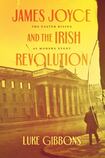
Ciaran Carson’s The Star Factory begins with a sketch of his father telling tall tales from the outside toilet of their Belfast terrace, his father’s lit cigarette dancing in the dark, his stories a portal for the young boy to pass through, far from the cold city. Carson’s father was a postman, an Irish speaker and an Esperanto enthusiast. This last invited an international perspective on the North. On one occasion Carson’s father and two brothers were invited to tea on a visiting Russian warship. On another the family home was attacked after it was discovered his father had the Esperanto version of the Little Red Book, the local newspaper inciting a red scare with the headline “Belfast postman knows the thoughts of Chairman Mao”.
Carson’s curiosity was partly a refusal to be bound by the “wee six”, a refusal that his Derry contemporaries Seamus Deane, Brian Friel and Seamus Heaney worked into the psychic shape of Field Day, a cultural collective that imagined the future of the island by means of a fictional fifth province. The plays, pamphlets and poems that followed are part of the slowly emerging mental landscape that Marilynn Richtarik charts in Getting to Good Friday: Literature and the Peace Process in Northern Ireland.
Field Day, the subject of one of Richtarik’s previous books, was committed to understand Ireland by comparison with other times and places. Partition, language loss and cultural conflict are common conditions of imperial retreat. Today, any close reading of Northern Ireland as a state and concept requires an awareness of the conditional, the unexpected and the global, if only to illustrate the foreclosures of partition. These cross-currents wash over a novel like Colum McCann’s TransAtlantic, which Richtarik reads mostly for the representation of George Mitchell’s role as a peace negotiator. The approach makes sense in the context of Getting to Good Friday, but in the context of McCann’s novel it suggests how much further there is still to go in reading the North as a fiction in and of itself.
Getting to Good Friday is a book of insightful moments. A five-chapter study of literature written around the time of the peace process, it focuses mostly on novels by male writers. Each chapter shares a common structure, which introduces a book, gives a summary of political events around the time it was written, and then suggests ways in which the two relate. This can be speculative, and the best moments are when Richtarik works through drafts and letters to suture a sense of hopeful possibility into the general disquiet.
10 of the best new shows to watch in April: including Netflix medical drama and two AppleTV+ releases
MobLand review: Pierce Brosnan’s Irish accent is a horror for the ages. Forget licence to kill, this is more Darby O’Gill
Steve Wall: ‘When Bono was offered the medal, I tweeted: Surely he won’t accept that. I didn’t know he already had’
‘It is so expensive in Dublin we decided to rent’: Swedish embassy returns to capital
Richtarik writes with clarity and care, and her readings of Bernard MacLaverty, Deirdre Madden and David Parks are real highlights, as is her account of Friel’s difficulties with Making History, his notebooks full of question marks, his progress stop-start. The eventual production of Friel’s play opened a path for Heaney to write The Cure at Troy, a play that performs Richtarik’s key argument that literature, like peacemaking, is a work of drafts, versions and compromises (although if Jeffrey Donaldson had been a novelist, the manuscript of his masterpiece would have ended up in the fire so striking is the image of his theatrical destruction of the Framework Document when he was a negotiator for the Ulster Unionist Party).
Together these literary works generate an empathetic self-awareness that is of a kind with the collective solidarity that non-violence requires. Richtarik reads this symmetry as a desire to create an inclusive sense of Northern Irish identity, which might have been news to Heaney, Deane and Friel, who tried to imagine peace without domination, implied or otherwise.
[ Paul Muldoon: Lines on the 25th anniversary of the Good Friday AgreementOpens in new window ]
Getting to Good Friday is an important book at a critical time. In arguments about Brexit and the protocol it is sometimes remarked that the people who defend the 1998 agreement never read it. This diminishes the essential fact that a vote for peace was a vote against killing. All survivors have the reality of that violent time imprinted in their minds and bodies, and Richtarik’s subject is the writer’s struggle to represent this fraught condition in works of art that give life new shape and form. Some, like Padraic Fiacc, never could. Some later, like Wendy Erskine and Lucy Caldwell, whose excellent novel All the Beggars Riding serves as this book’s introduction, catch the echoes of that past in contemporary life. And some, like Michael Magee and Jill Crawford, look forward to new horizons. Getting to Good Friday is a welcome bridge between these sundered generations, made of the words that join them, conditional as they are.












